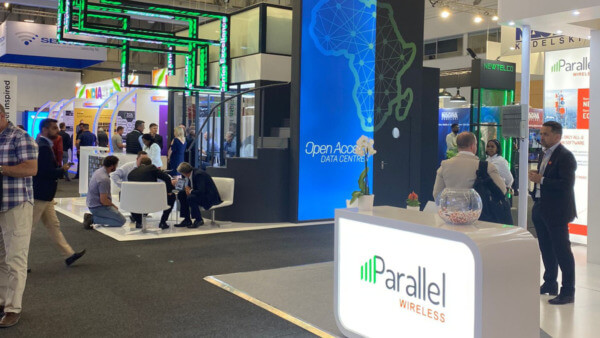Parallel Wireless is proud participate in AfricaCom South Africa 2022
Our team was on-site at the AfricaCom event in South Africa to discuss Parallel Wireless’ 2G solution; a complete GSM network designed specifically to connect the unconnected at a lower cost and on an accelerated timeline.
The Africa Tech Festival held its kickoff event in Cape Town on Tuesday, welcoming thousands of attendees to the opening ceremonies and setting a new attendance record after organizers were forced to postpone last year’s festival due to the global pandemic.

James Williams, Director, Events, Informa Tech, opened the festival by remarking that: “During these 25 years, the event has evolved to ensure we remain the continent’s largest and most influential tech event and to tell the story of continued growth and frontier technologies, and how African innovation is tackling some of the globe’s biggest challenges.”
Why 2G is crucial for Africa’s MNOs
Africa’s Mobile Network Operators (MNOs) face several challenges. On the one end, they are grappling with growing data consumption and preparing the networks to launch 5G services in the future. On the other end, the market demands they continue running 2G and 3G networks for many years.
5G-enabled use cases and services will allow them to add new revenue streams and increase profitability. However, the high cost of 4G and 5G devices coupled with the low spending capability of the subscribers means that the MNOs need to continue offering 2G services for several more years.
This means that 2G continues to be relevant and is likely to remain so for the next several years. Nearly six million 2G devices are sold every year in Africa, and 14 million users still use 2G devices. However, only 10% of Africa’s population uses 4G, even though half is covered by a 4G signal, says a recent report by Vodafone.
That being said; The operational cost of running 2G and 3G legacy networks is high, while the Average Revenue Per User (ARPU) continues to be low. Further, running multi-technology networks, including 2G – 5G, not only adds to network complexity but also results in the high cost of managing multiple Gs.
The advantage of Cloud-native Open RAN
When you look at 2G in particular, a virtualized solution enables lower Total Cost of Ownership (TCO) as it provides a scalable and software-upgradeable virtual base station (BTS) and Base Station Controller (BSC), using a virtualized aggregator function. CAPEX and OPEX are better controlled because virtualized 2G doesn’t require cooling and consumes much less power compared to traditional networks.
One of the most important factors of a cloud-native All G Open RAN solution is that mobile network operators’ investments are future-proof. Offering services based on the latest communications standards simply require a software upgrade. As such, mobile network operators can cost-effectively migrate to 4G and 5G when their market is ready for newer standards.